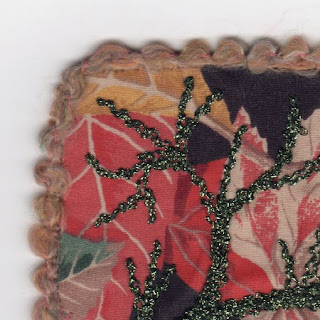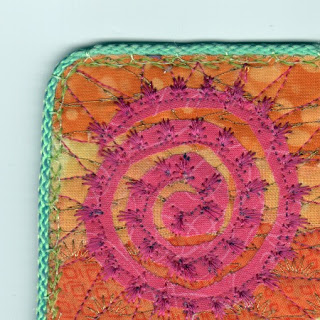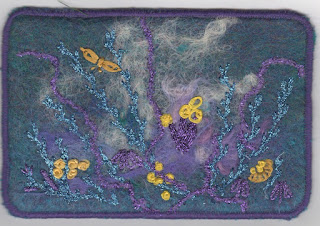December 2015
Sheree McKee
SewFabSew.blogspot.com
Some times you need to make a quick
fabric postcard. Time is of the essence.
Less can be effective and it can save
time. Keeping your postcard project
short and sweet can lead to some nice results.
There is a marketing slogan called the
KISS principle: Keep it Simple and Straightforward.
This is a simple Christmas
postcard. By using a ribbon with text verse
it adds to the holiday impact.
I used a sparkle background fabric; a holly-themed cotton with hints of silver
metallic specks. It was fused to
stabilizer. I layered a “HO HO HO”
ribbon near the bottom with decorative stitching. I tucked in a little gather of tulle netting
and a feather before sewing the top row.
Lastly, I pulled a small silk flower
off a spare stem of white flowers in my craft closet, and topped it with a
coordinated button!
The edges were finished with a
metallic thread stitch. Then I used
Aleene’s Tacky glue along the edges only, to glue it to some postcard stock.
But first, I stamped the card stock
with a rubberstamp.
It took me about two-and-a-half hours
to make and finish four postcards!
A little sparkle, a little sentiment,
and a little frou-frou!
Now it’s time to hang some Christmas
decorations, bake some cookies, shop for gifts…. clean the house…. pack for a
trip…. Whew!











































